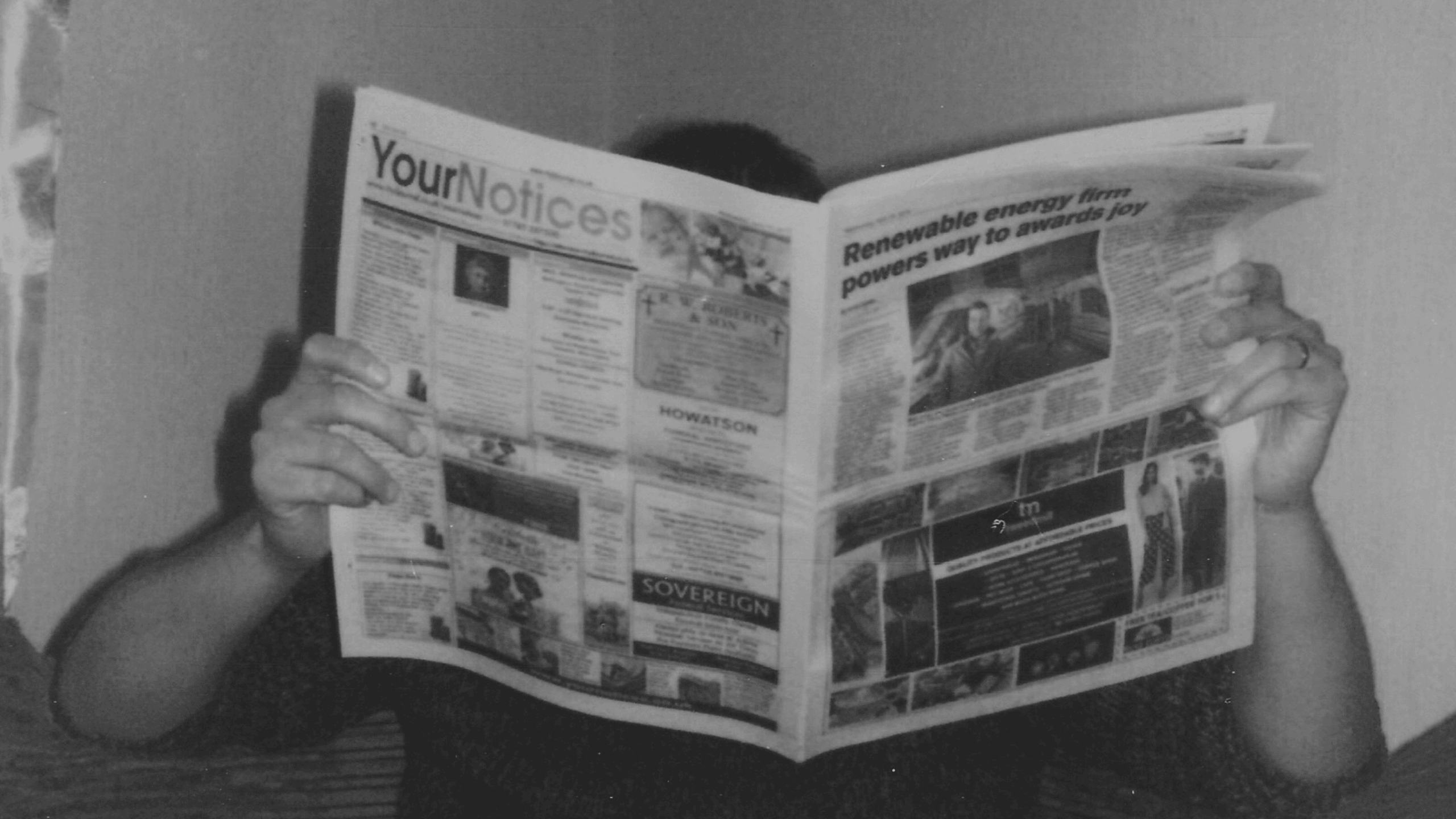These four journalists share their thoughts on the landscape, plus how it could impact PR.
Journalism is forever changing and today, with the growth of AI and technology plus many publishing houses making redundancies, it’s evolving quicker than ever.
This change means the world of PR and marketing is having to adapt and change.
It’s not the first time that journalism has experienced a shift.
The introduction of the internet in the 90s brought with it a whole other dimension as digital media and instantly accessible news became commonplace. Any publication can now reach every corner of the globe in mere seconds.
And then of course social media stormed in. We now live in an era where just under half of UK adults use social media for news, rather than a conventional news site.
This digital era has meant a subsequent decline in the traditional print media; think glossy magazines and newspapers.
According to Statistica, the public’s spending on newspapers fell from over £9.9 billion in 2005 to below £2 billion in 2022. Many print titles have even closed. Previously a broadsheet newspaper, The Independent became an exclusively online publication in 2016.

About the author
Natalie Clement | Digital
Marketing Executive
With international experience as a digital marketer, writer, and editor, Natalie has worked across sectors including lifestyle, technology and tourism.
Journalists on: AI
Artificial intelligence is evolving and improving every day and it’s rapidly creeping into all sorts of content. Freelance journalist Jenny Francis says that she’s noticed a rise in the use of AI.
“Mainly because editors have sent blanket emails to freelancers asking for it not to be used, suggesting they must have it submitted to them.”
Jenny feels journalism plays a pivotal part in our society. “It keeps us well informed with facts, real opinions and real experiences. When we sub out writers with AI words we lose the heart of the communication and the connection between writer and reader.”
She adds: “We work very hard as writers to know exactly who our audience is, so that we can best communicate, sympathise, entertain and inform them. I just do not believe that AI has the capacity to do the same – especially when it comes to opinion-based pieces.”
Freelance health and fitness journalist, Lucy Gornall, says that despite seeing AI being used more and more regularly across websites, blogs and social media, she doesn’t think it will ever replace a human voice.
“When I write, I try to write with some personality and character. AI is robotic; it doesn’t feel genuine.”
In terms of PR, Lucy adds: “What bothers me, is when PRs send press releases written by AI. I can see it a mile off and it feels like a bit of a kick in the teeth when I receive AI-written releases in my inbox given that I make a living from writing.”
Journalists on: Social media
Social media has changed how we consume news.
“News is quicker than ever; it’s instant,” says Lucy.
“So when a journalist goes to write an article, it can no longer just be about that news, it needs to move it on somehow. The reader already knows what’s going on, but they want more. So we have to think of new, original angles.”
“I think journalism is also going to become less polished,” says freelance journalist Kat Romero.
“People want on-the-ground accounts, raw footage, and real people. They want to see the news for themselves rather than it be reported to them.
“Younger generations also value authenticity and transparency which is why I think they’re moving towards more citizen journalism and independent reporting.”
Staying in the loop with social media trends is now vital for PRs as so many of a journalist’s stories come from these trends. So when pitching stories and ideas, a relevant ‘trend’ hook could make it more appealing to a journalist.
Offering picture and video content with your PT pitches can also help, however it’s best to veer away from overtly branded content. Publications will usually want money now for promoting a brand, or at least an affiliate link.
Journalists on: Short form vs long form
Attention spans are getting shorter. And social media doesn’t help this as consumers scroll through hundreds of short videos and snapshots of events happening around the world, often in real time.
Jenny says: “It’s clear that our attention spans are not what they used to be and that journalism is having to constantly adapt to give information in as short and attention grabbing ways as possible. And I believe this is only going to continue.”
“For PRs, this means that the story they’re selling needs to attract a journalist instantly,” says Lucy. “There’s not enough time anymore to read through long releases as journalists are juggling so many things and also looking for really quick, to-the-point stories that can attract thousands of clicks.”
Assessing exactly how you contact journalists is key here; calls are a thing of the past for many and instead, it’s all about creating a stand-out email with a clickable and relevant subject line.
Plus, with journalists juggling so much, a PR that provides (non-AI generated!) ideas and headline titles could be of real support to journalists now.
Journalists on: Redundancies
With print in decline and AI speeding up various processes, a lot of media houses are making cuts, with some journalists being made redundant. As well as this, several publications now expect journalists to take on multiple roles.
“It’s not just a case of being a good writer anymore,” says Lucy.
“Now you need to be able to write for print and online, source pictures, sub-edit, make social content, be savvy with SEO, know how to use CMS…the list goes on.”
Lucy adds: “AI is already used to transcribe audio (such as interviews) and also for fact-checking. This was all done manually before and each of these takes time. Naturally, the speed of AI makes it very appealing, plus it’s cheaper than paying a human.”
Kat says journalism has been really impacted by budget cuts and teams hubbing (fewer people working over multiple magazine and/or newspaper titles).
“This means reporters aren’t always given adequate time to work on stories or investigate thoroughly.”
In turn, this means content may not be as thorough as it once was.
Jenny says: “I think that print media is a very tough place to be at the moment for publishing houses and they have to make decisions to keep themselves going.”
The cost-cutting and redundancies also means that many journalists are having to go freelance. But, as Louise points out, ‘being freelance allows you, in theory, to pick and choose between the jobs you take”.
“It also means you can subsidise the low paying jobs with better paid corporate writing or PR work.”
For PRs, this means staying constantly in the loop with who’s where, doing what. A journalist could work over several titles and have many roles, so it’s vital to know what everyone is up to.
This can also mean that networking becomes easier as one journalist could be the catalyst to a number of potential articles across different titles.
Journalists on: The future
So what does the future hold for an industry that dates back hundreds of years?
“I like to think that journalism will always have its place. Humans thrive on communication with other humans, and I really hope that that core feature of our being will be what helps journalism stay alive,” says Jenny.
“Personalised, algorithm driven media sites are the way it is going, and only being shown what we want to read, and want to see, and want to believe, might sound good, but to me it’s making us all more closed minded and less connected to the real word and the thoughts of others – and this is a challenge that needs to be overcome,” she adds.
Louise explains that now, there’s far less value on “good writing and far too high a priority on clicks”.
How will this all affect PR?
PRs need to be quicker, more responsive and be as attuned to social media trends as they are to conventional news. Pitches need to be tailored specifically to publications to not only make the pitch stand out, but also to save the journalist time and make it easy to use.
Brandnation’s Head of PR, Sarah Hugill, shares the following expert advice.
- Shrinking newsrooms: With newsrooms becoming smaller and journalists under increasing pressure to produce content that generates immediate engagement, it’s crucial that our pitches are not only timely but also highly newsworthy and compelling, capturing the attention of both journalists and their audiences.
- Journalists juggling multiple roles: Many journalists now contribute to multiple publications, meaning they’re working under tighter deadlines. To support them effectively, we need to deliver clear, concise pitches and provide all the necessary assets to make their job easier and help them publish quickly.
- Growth of affiliate programs: Over the past few years, affiliate programs have gained significant traction, with many journalists prioritising brands with strong affiliate partnerships. As part of our role, we must educate clients on the value of affiliate marketing, helping them stand out from competitors and secure coverage in top digital outlets.
“It’s an exciting time and one we should all embrace. By working with technology and the changes it brings, PRs can still get their brand messaging across; there are just a few tiny tweaks in how exactly that’s done,” says Lucy.





